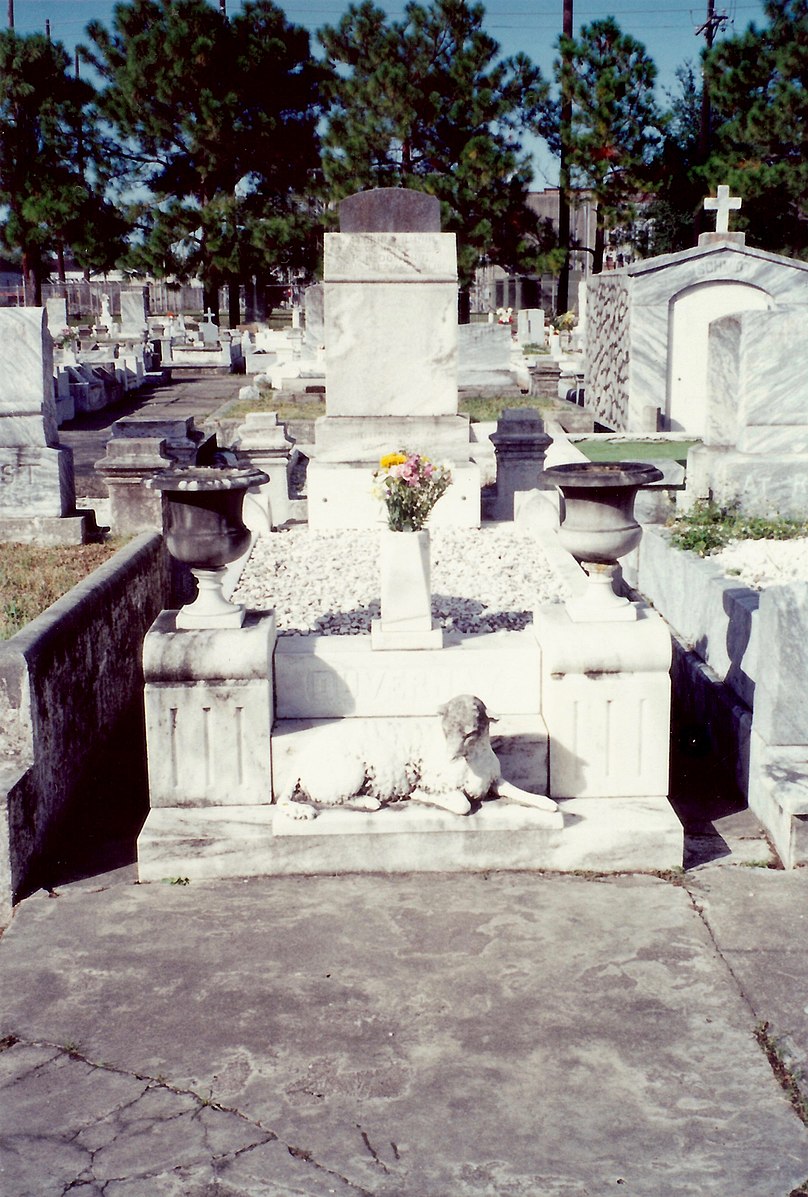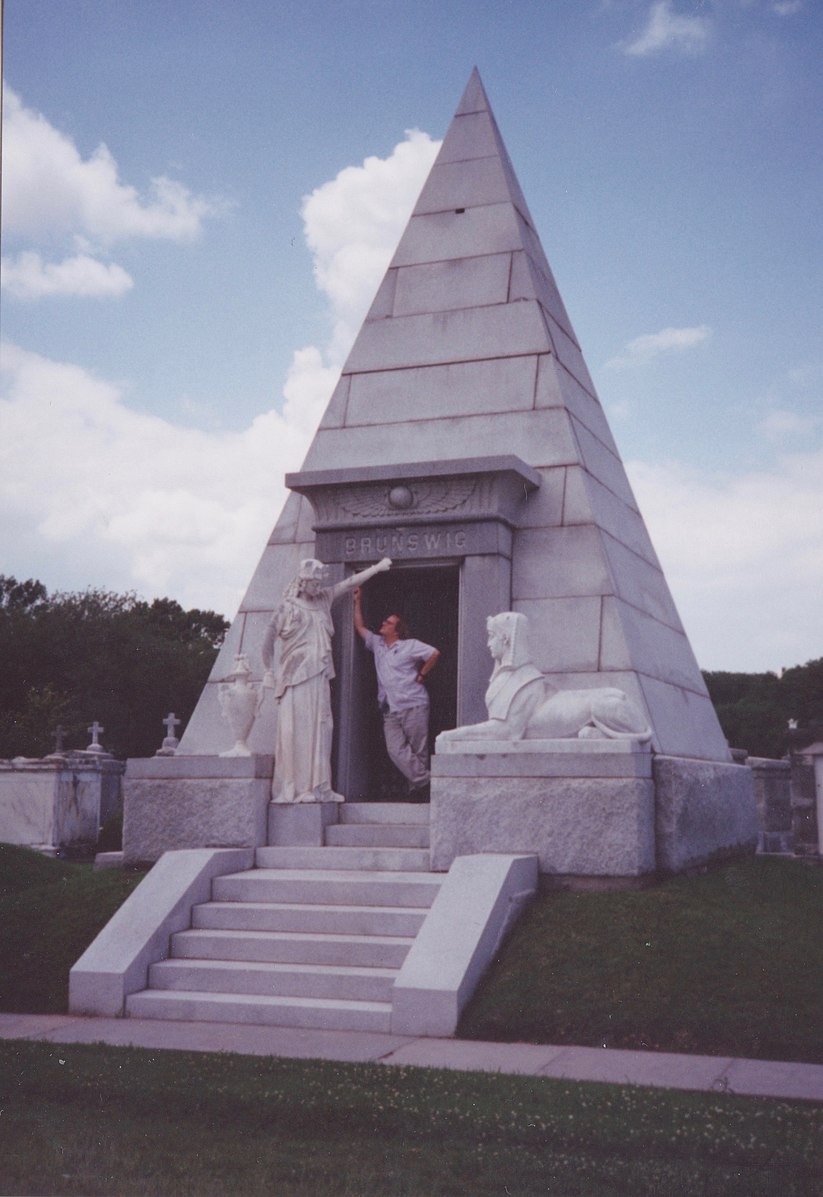Cemeteries are everywhere in New Orleans. There are forty-two cemeteries found within the city limits, and the St. Louis cemetery alone attracts over 100,000 visitors a year. These cemeteries are thought of as unique because of the above-ground tombs found within a cemeteries’ walls. These historical tombs hold some of the most influential people of New Orleans. Today, in New Orleans, the tomb has a varied use. Of course, they primarily hold the dead, but they are also a way to display the dead’s importance and, some might say, a way to keep the bodies from floating away in Louisiana hurricanes. Tombs have cultural significance to New Orleans and make the city unique.
As a tourist walks down the aisles of New Orleans cemeteries to view the tombs, their guide will discuss the high water table that causes the need for the above-ground tombs. New Orleans is flanked on both sides by the Mississippi River and Lake Pontchartrain. The city is roughly five to nine feet below sea level and continuously sinking. There is tale upon tale of New Orleans’ buried dead quite literally popping out of the ground when buried centuries ago. Settlers tried putting rocks and drilling holes in the coffins to keep the bodies down, but the coffins would still come out of the ground due to flooding. These macabre stories make it quite clear why for centuries, the bodies have been stored above-ground. The custom of keeping tombs above ground not original to New Orleans, but the city adapted to it because it was so clearly needed. However, the problem with tombs staying in their place due to storms has not ended there.

Tomb (Photo from: Wikipedia)
Arbie Goings, a member of the Disaster Mortuary Operational Response Team, describes how, when heavy rains and hurricanes land in Louisiana, above-ground tombs still regularly escape from their respective cemeteries. He specifically mentions that he spends a lot of time in “coffin recovery.” When a large storm hits, he must find the coffins and bring them back to their grave. What is controversial about Goings is his strong suggestion that the best solution to this issue is to bury people underground, yes, six feet under. He recognizes that this is against the New Orleans tradition and history. When people visit New Orleans, they want to see the famous tombs of Marie Laveau, Nicolas Cage, and countless important New Orleans figures throughout history. Cemeteries often capitalize on their famous tombs to attract visitors. Large and famous tombs such as these aren’t likely to drift away in the storms. It is the smaller tombs and coffins that are at risk during large storms. He “scoffs” at the idea that the tombs are above ground because of the high water table and instead claims this is “dead wrong,” He, and others in the industry, believe that being buried underground is the best way to keep the bodies in their place. Essentially, he claims that all the stories of settlers popping out of the ground when buried underground are just stories; Goings wishes to be buried underground when he passes.

Tomb (Photo From: Wikipedia)
Regardless of whether tombs belong above or below ground, it is clear that the heavy rainfall and storms are to blame for bodies that have escaped the cemeteries in this century. There is proof from countless recent storms that above-ground tombs will not always keep the body in place. Hurricane Laura, a hurricane that hit Louisiana in 2020, caused as many as 300 caskets to float away in Cameron Parish. The news reported several families devastated over their missing family members. What’s also important to note is that the city is continuously sinking, slowly but surely putting thousands of tombs in danger. The year 2020 alone has had five hurricanes strike Louisiana, including Cristobal, Marco, Laura, Sally, and Beta. The year 2020 has been the most active hurricane season on record in the Atlantic. The city is also built on loose soil, and, to make matters worse, the sea level is rising, and New Orleans is sinking roughly a centimeter a year. This is due to countless factors, mostly manmade, including subsidence from groundwater pumping, land movement, and climate change. Increased temperature due to climate change has already had noticeable effects, such as increased storm frequency. Tombs floating away are likely the least of New Orleans residents’ worries of the impact of climate change on their city. In a century or two, thousands could lose their home, and parts of the city could be gone. In the meantime, some families are losing their resting loved ones.
Despite the ubiquitous nature of the New Orleans tomb, the reality of the cemetery is often ignored. It is an everyday reminder of death that thousands walk by and admire. The history and mystery surrounding these tombs allow visitors to ignore their own gruesome fate, and instead focus on the tomb and those who have already passed. To some, it may be comforting to walk in a cemetery and so openly admire the dead and their resting place. To others, it can be unearthly. Despite Arbie Goings and those who have similar opinions, tombs will likely stay above ground in New Orleans in the foreseeable future. The cultural and historical significance of the tomb is too much to ignore; it is too easy to overlook the reality of the dead floating away amidst a storm.
 NOLAbeings
Multimedia artist Claire Bangser created NOLAbeings as a portrait-based story project that marries...
NOLAbeings
Multimedia artist Claire Bangser created NOLAbeings as a portrait-based story project that marries...
 Data corner: Adobe Suite (create a PDF, social media graphic, presentation, edit a photo and video
Data corner is where you go to work with analytics and top tech skills. It takes on everything from PERL and SQL to Canva and Sprout Social.
Data corner: Adobe Suite (create a PDF, social media graphic, presentation, edit a photo and video
Data corner is where you go to work with analytics and top tech skills. It takes on everything from PERL and SQL to Canva and Sprout Social.
